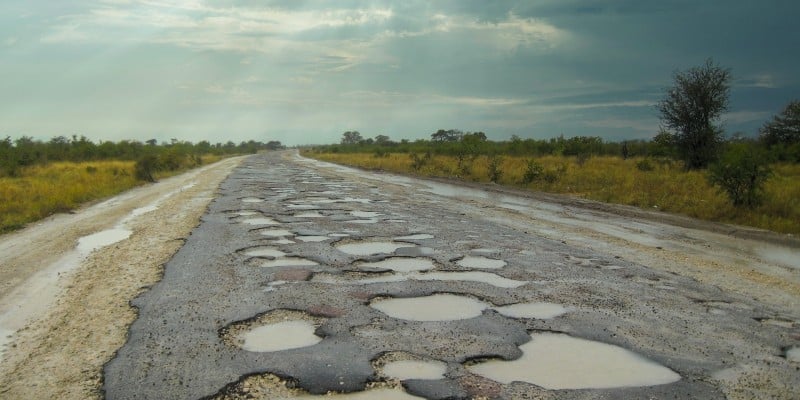The first time I visited a village in Nigeria where people didn’t have access to water, I instantly wanted to solve the problem. The solution seemed simple enough: build a water well. So, with the help of friends and family I raised $10,000 and built a well in the village. It worked—for a bit.
About six months after the first drop of water flowed from the well, I received a call that the water contraption was broken. After raising some more funds, we fixed the well and water flowed again, but this time the fix only lasted a couple of months. Friends and I went on to build five wells in different communities and virtually all broke. At first I thought we were just unlucky, but I was wrong. There are tens of thousands of broken wells across the world, built by more experienced organizations. Why was our solution inadequate?
It turns out that I, as well as many of these organizations, made one of the biggest mistakes in development: we jumped straight to what we thought was the solution to a problem before really understanding whether it would generate the outcome we wanted. Solutions and outcomes are not the same.
Most problems in development, from healthcare and education to infrastructure and institutions, appear as a lack of resources. In education, it’s a lack of schools and teachers; in healthcare, it’s a lack of hospitals, healthcare workers, and medical supplies; and in infrastructure, it’s a lack of roads, bridges, and ports. As a result, it’s easy to surmise that the solution to these problems is simply to provide the much needed resources. Where there are no hospitals, build some; where there are no roads, construct a few; and nowadays, where there is no cash, simply transfer some. But these programs, at best, provide temporary fixes to much deeper problems. At worst, they leave communities dependent on the largesse of the resource providers, or donors. Either way, unfortunately, the actual outcome many hope for—alleviating poverty and creating a sustainable path to prosperity—is never quite achieved.
In order to make progress toward better, and permanent development outcomes, stakeholders must understand how solutions and outcomes differ. Solutions are contextual while outcomes are often universal. For example, if two people get ill (a problem), the likely desired outcome is good health. However, the solution necessary to get them from sickness to good health depends on each one’s circumstance. One person might be wealthy with access to a doctor and medication while the other might be poor, or one might have a chronic disease while the other has a more acute and curable illness. The point is, both people may want the same outcome, but the solution will differ. This is one of the reasons many development programs struggle to gain traction; too many focus on developing generic solutions that artificially solve problems like “lack of water” rather than developing viable, contextual, and permanent solutions for creating a sustainable path to prosperity (the actual desired outcome).
Prioritizing long-term outcomes over short-term solutions
The allure to focus on short-term solutions, especially when they are relatively easy to achieve, is strong. Constructing a well is a lot easier than developing an intimate understanding of people in a community and considering how the proposed solution will enable long-term progress towards creating prosperity. But there are no shortcuts. The hard work must be done. Asking these three questions can help your organization transition towards developing lasting solutions that generate better outcomes.
- How will our activities be sustained when we leave this community?
If organizations aren’t willing to take an honest assessment of the sustainability of their activities, then true progress will be difficult. Had friends and I had asked ourselves this simple question, we would likely have come up with a different solution to the water problem. Organizations do not need to know the answers to all the questions they ask from day one, but by consistently asking how activities will be sustained they will inevitably develop better and lasting solutions.
- What else do we know about this community besides the fact that it lacks access to this resource?
Too often, development is seen as a “let us help the poor lead more efficient lives” project, leading to programs that merely transfer resources such as cash, or provide services like teacher training. But this narrow view of development misses an important aspect: what individual communities value and how they define progress. When organizations take the time to understand the unique circumstances and values of the communities where they’re working, they’ll be better equipped to design effective solutions.
- Do our activities create a mechanism that empowers people and gives them hope?
Development is difficult without hope. Stories of China lifting one billion people out of poverty and of African entrepreneurs building billion dollar companies that have provided jobs and economic activity instill a sense of hope in all of us. No country has ever developed without people who are empowered to solve their problems. Aid from afar can kickstart the process, but ultimately it’s the local citizenry that builds prosperity. If your organization focuses more on empowering people and less on funding projects, then there’s hope.
Development is hard and complex. But if we have learned anything from the lessons of the COVID-19 pandemic, it’s the people in poor countries who suffer the most. If economic development stakeholders don’t change their strategies and start developing contextual solutions, progress will continue to move at a glacial pace.



